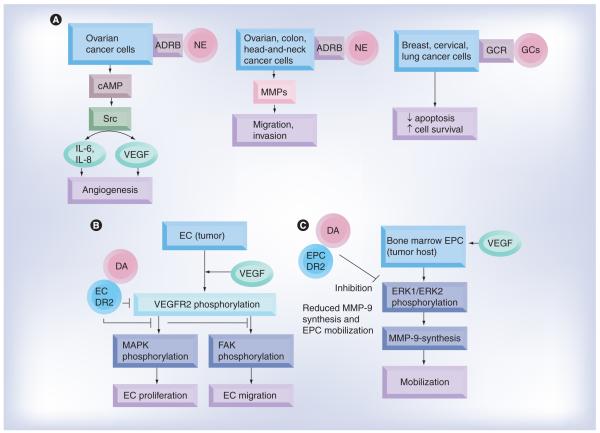Figure 1. Norepinephrine-, dopamine- and glucocorticoid-mediated signaling pathways in tumor, endothelial and endothelial progenitor cells.
(A) In ovarian cancer cells, NE acting through ADRBs induces synthesis and release of the proangiogenic cytokines IL-6, IL-8 and VEGF. NE also induces synthesis of MMPs and stimulates migration and invasion of ovarian, colon and head and neck cancer cells; in breast, cervical and lung cancer cells, GCs acting through the GC receptor inhibit chemotherapy-induced apoptosis and promote cancer cell survival. (B) DA acting through DR2 receptors in tumor endothelial cells inhibits proliferation of these cells by inhibiting phosphorylation of VEGFR-2, MAPK and FAK. (C) DA decreases ERK1/ERK2-mediated MMP-9 synthesis and release by endothelial progenitor cells and thereby inhibits their mobilization from the bone marrow. Thus, DA prevents the participation of EPCs in tumor neovascularization.
ADRB: β-adrenergic receptor; DA: Dopamine; EC: Endothelial cell; EPC: Endothelial progenitor cell; FAK: Focal adhesion kinase; GC: Glucocorticoid; GCR: Glucocorticoid receptor; MAPK: Mitogen-activated protein kinase; MMP: Matrix metalloproteinase; NE: Norepinephrine; VEGFR: VEGF receptor.

